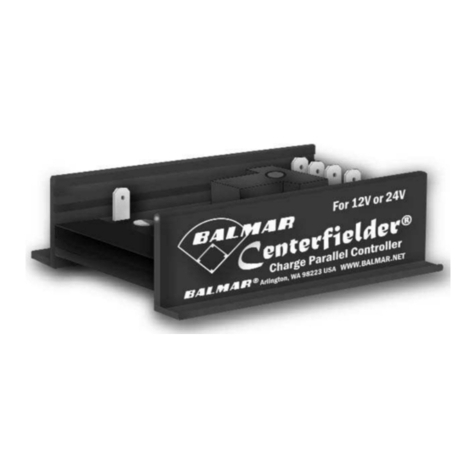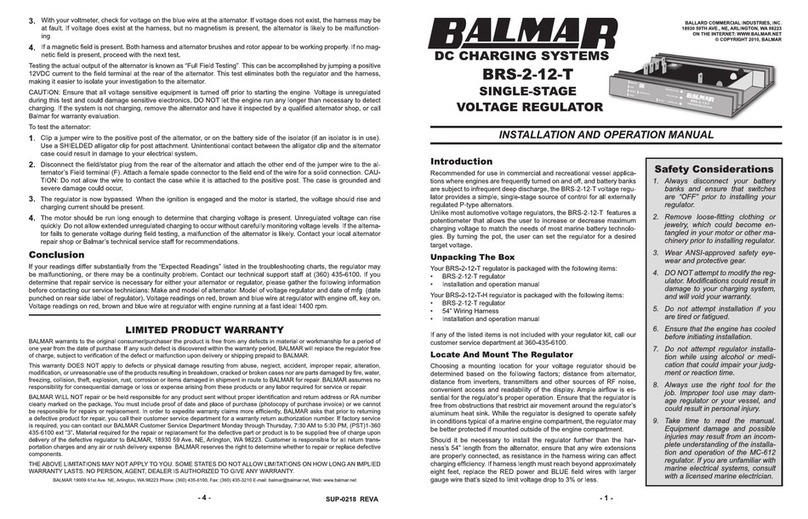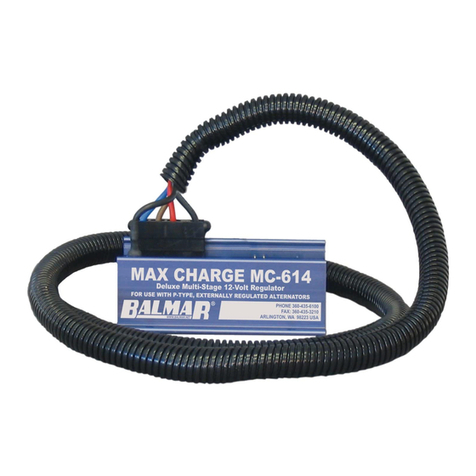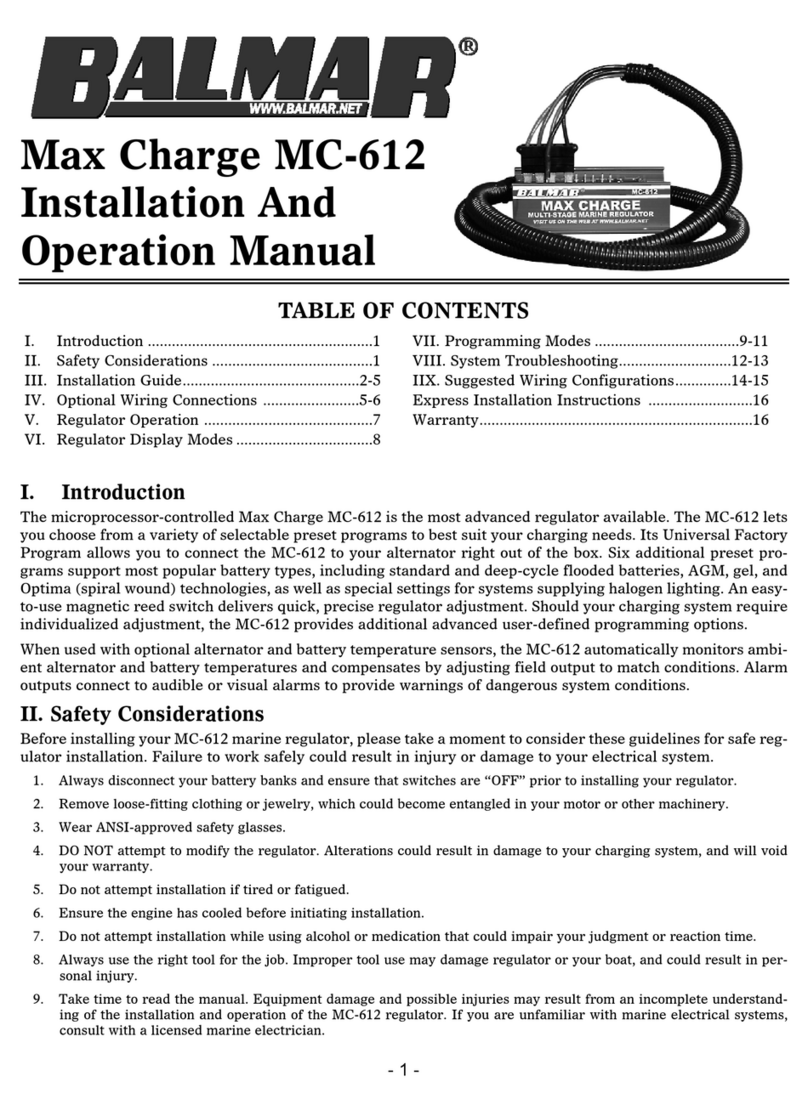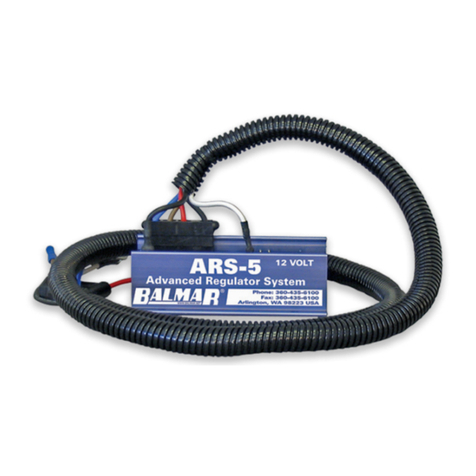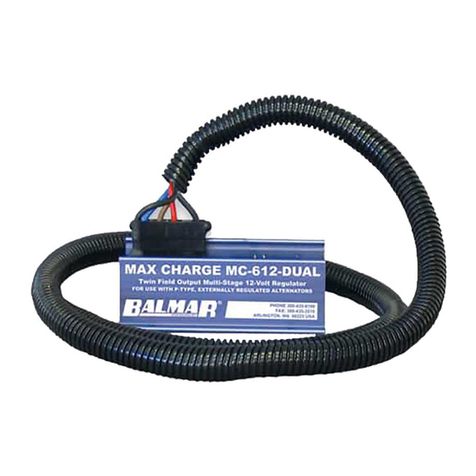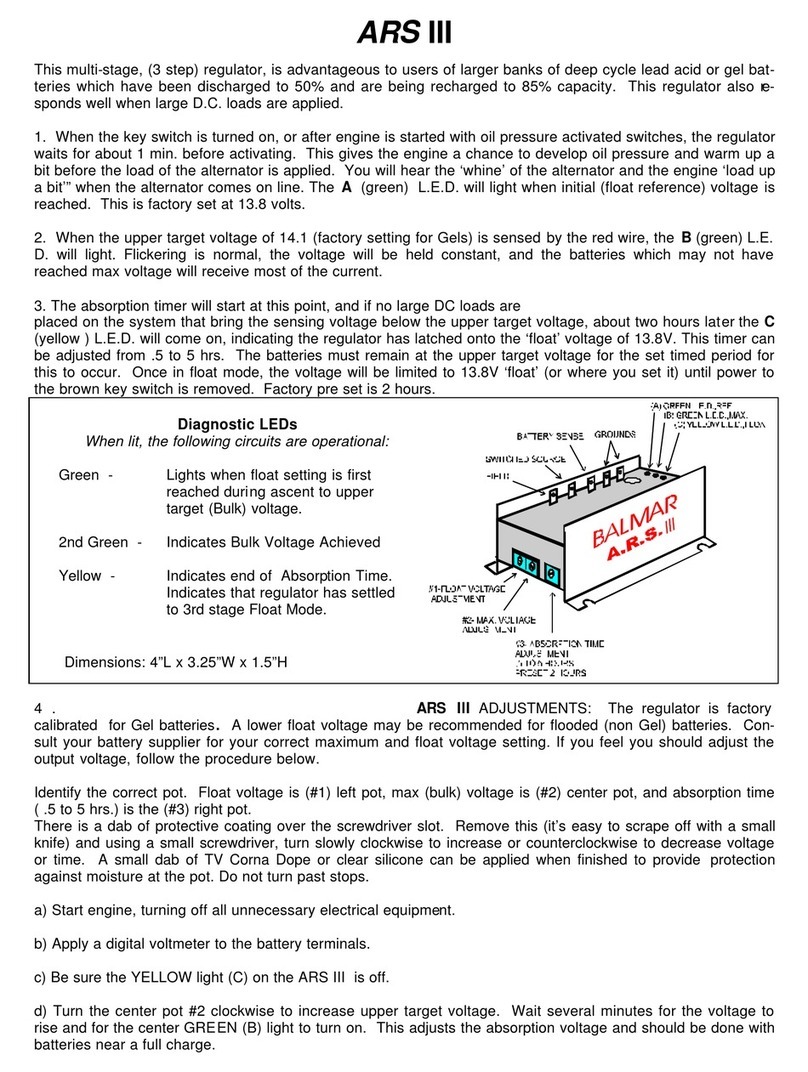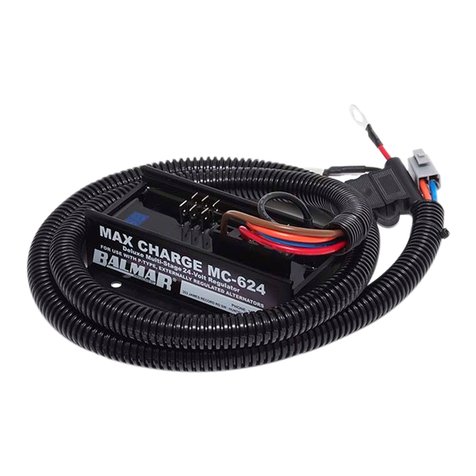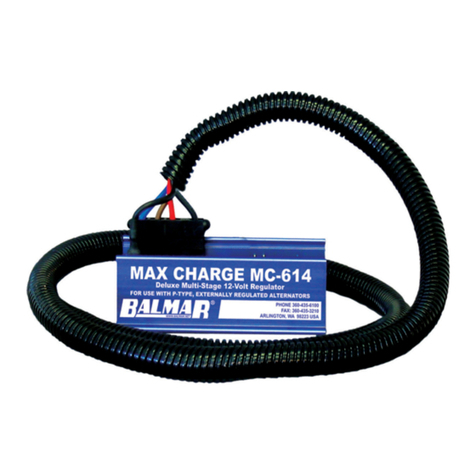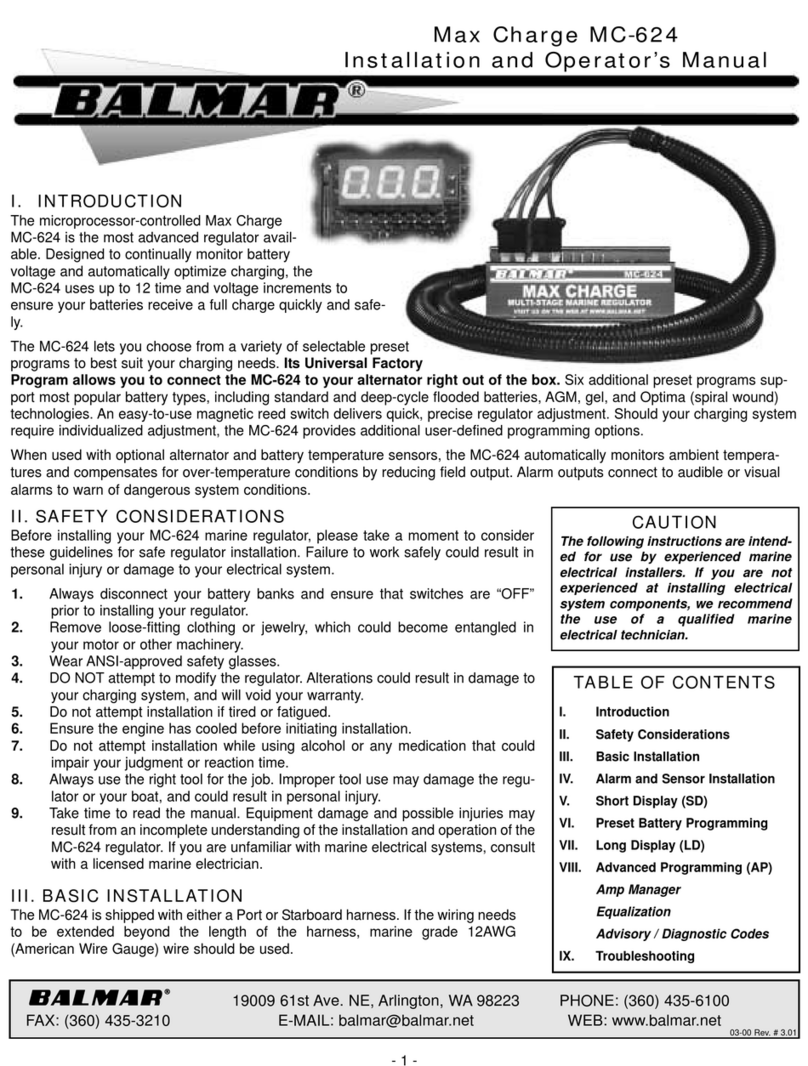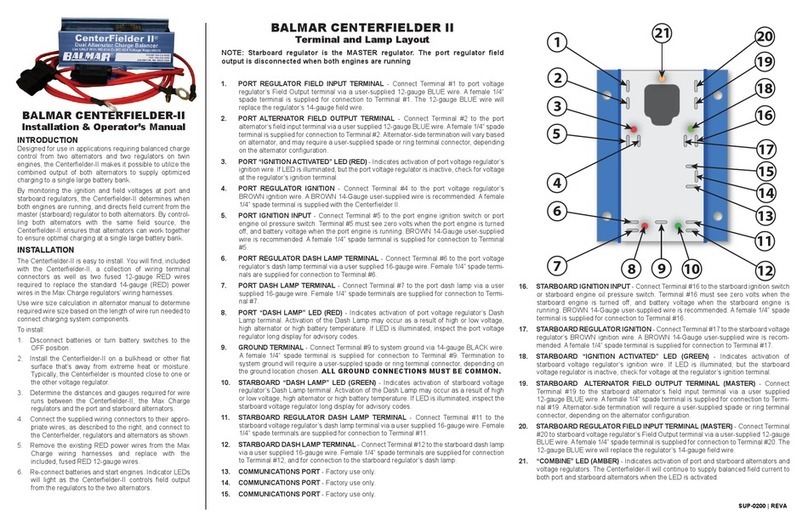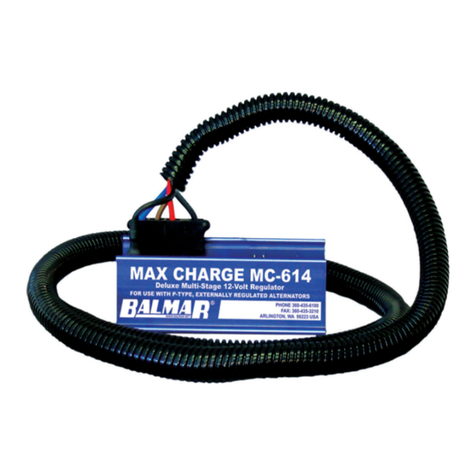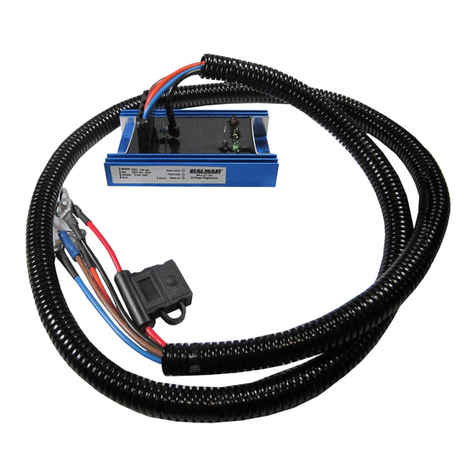
ARS-5
MULTI-STAGE
VOLTAGE REGULATOR
INSTALLATION AND OPERATION MANUAL
BALLARD COMMERCIAL INDUSTRIES, INC.
18930 59TH AVE., NE, ARLINGTON, WA 98223
ON THE INTERNET: WWW.BALMAR.NET
© COPYRIGHT 2010, BALMAR (Revised July, 2011)
Safety Considerations
Always disconnect your battery1.
banks and ensure that switches
are “OFF” prior to installing your
regulator.
Remove loose-tting clothing or 2.
jewelry, which could become en-
tangled in your motor or other ma-
chinery prior to installing regulator.
Wear ANSI-approved safety eye-3.
wear and protective gear.
DO NOT attempt to modify the reg-4.
ulator. Modications could result in
damage to your charging system,
and will void your warranty.
Do not attempt installation if you5.
are tired or fatigued.
Ensure that the engine has cooled6.
before initiating installation.
Do not attempt regulator installa-7.
tion while using alcohol or medi-
cation that could impair your judg-
ment or reaction time.
Always use the right tool for the8.
job. Improper tool use may dam-
age regulator or your vessel, and
could result in personal injury.
Take time to read the manual.9.
Equipment damage and possible
injuries may result from an incom-
plete understanding of the instal-
lation and operation of the ARS-5
regulator. If you are unfamiliar with
marine electrical systems, consult
with a licensed marine electrician.
Introduction
The Balmar ARS-5 provides precise voltage control for Bal-
mar high-output 12-volt alternators and other externally reg-
ulated P-type (positive eld) alternators, the ARS-5 features
user selectable programs for the following battery types: Deep
cycle ooded, gel, AGM and spiral wound (Optima) batteries.
In addition, the regulator features a universal default (UFP)
program that’s safe for most battery types.
In addition to the user selectable preset programs, the ARS-
5 features a wealth of advanced programming modes which
make it possible to tailor charging to a wide variety of environ-
ments and battery types
When used in conjunction with optional MC-TS-A and MC-TS-
B alternator and battery temperature sensors, the ARS-5 fea-
tures the ability to monitor and respond to a range of ambient
temperature conditions, including reduction or discontinuation
of charging voltages, should a catastrophic over-temperature
condition occur at the alternator or the batteries.
Introduction...........................1
Safety Considerations..........1
Regulator Installation........... 2
Unpacking Box .....................2
Locate/Mount Regulator ......2
Basic Wiring Installation...... 2
Regulator Terminal Layout ..3
Installation By Wire ...........4-5
Initial Start Up .......................6
Regulator Operation............. 6
Regulator Display Modes.....7
Using Magnetic Tool.............8
Regulator Programming ......8
Basic Programming..............8
Adjust For Battery Type .......8
Belt Load Manager ...............9
Short/Long Display.............10
Failure Avdisory Mode ....... 11
Advanced Programming.... 11
Unlock Adv. Programming. 11
Adjust Adv. Programs ...... 11-12
Default Program Settings ..12
Add’l. Regulator Features.. 13
Troubleshooting ............14-15
Warranty .............................. 16
- 1 -
